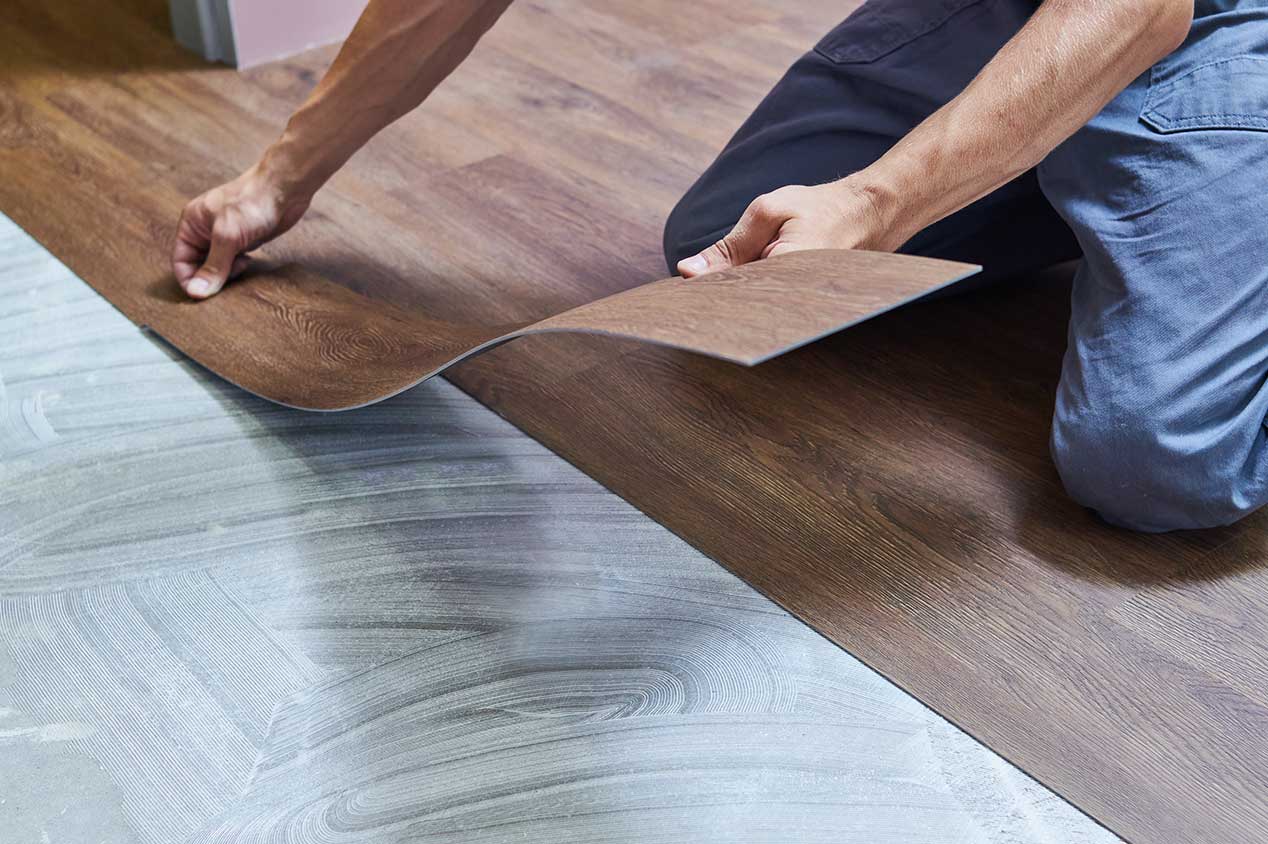Have you ever stopped to admire your floors, marveling at their beauty and durability? Maybe you’ve even caught yourself wondering, “What kind of flooring do I actually have?” The world of flooring can be a bit of a maze, especially when it comes to vinyl and laminate. These two types often share a striking resemblance, leaving you with a lingering question: is it vinyl or laminate?

Image: mikimemo.com
Fear not, fellow flooring enthusiast! In this comprehensive guide, we’ll embark on an investigative journey to decipher the mysteries of your floors and confidently determine whether you’re stepping on vinyl or laminate. We’ll explore the key differences, uncover the telltale signs, and empower you with the knowledge to confidently identify your flooring type.
Delving into the World of Vinyl and Laminate
Let’s start by understanding the fundamental differences between these two popular flooring materials.
- Vinyl flooring is essentially a synthetic material, crafted from polyvinyl chloride (PVC). It’s known for its versatility, affordability, and ease of maintenance. Vinyl can mimic the look of wood, tile, or even stone with impressive accuracy. While it’s not inherently durable, proper installation and care can extend its lifespan significantly.
- Laminate flooring, on the other hand, boasts a multi-layered construction. It typically features a core made from fiberboard or plywood, topped with a photographic layer depicting various materials like wood, stone, or even ceramic. This photographic layer is then sealed with a protective wear layer, usually a clear melamine resin, to guard against scratches and stains.
Visual Clues: Unmasking the Flooring Truth
Now that we’ve established the basics, let’s dive into the visual clues that can help you differentiate between vinyl and laminate flooring.
-
Appearance:
- Vinyl flooring: often mimics natural materials, but careful observation may reveal subtle differences. Vinyl often has a slightly textured surface and might lack the realistic wood grain patterns found in higher-quality laminate.
- Laminate flooring: tends to boast a more detailed, realistic appearance, particularly in high-end options. The wear layer provides a smooth, protective finish that can create a polished look.
-
Edges and Seams:
- Vinyl flooring: usually has seamless edges and joints. It’s often installed using adhesive, resulting in a continuous, smooth surface.
- Laminate flooring: is characterized by grooves and click-lock systems that allow for easy installation and removal. These features can be visually distinctive, especially along the edges of the planks.
-
Texture and Feel:
- Vinyl flooring: has a softer, more pliable feel due to its flexible construction.
- Laminate flooring: is generally harder and more rigid, offering a more solid feel when walked upon.
Beyond the Visuals: Delving Deeper
While visual cues provide a valuable starting point, additional factors can help solidify your flooring identification.
-
Water Resistance:
- Vinyl flooring: is generally more water-resistant than laminate. Some vinyl options are even waterproof, making them ideal for kitchens, bathrooms, and basements.
- Laminate flooring: is less water-resistant. Exposure to excessive moisture can lead to warping, swelling, and even damage to the core.
-
Durability and Scratch Resistance:
- Vinyl flooring: while relatively durable, can be prone to scratches and dents, especially in high-traffic areas.
- Laminate flooring: offers better scratch resistance due to its protective wear layer.
-
Installation and Cost:
- Vinyl flooring: is typically a more budget-friendly option and can be installed using adhesive or click-lock systems.
- Laminate flooring: with its click-lock system, is often considered an easier DIY flooring option but can be more expensive than vinyl.

Image: www.clodaghcollection.com
Expert Insights: Tips for Unraveling the Mystery
For those seeking a definitive answer, consulting a flooring expert is highly recommended. Not only can they visually identify the flooring type, but they can also analyze the materials for further verification. Additionally, they can provide valuable insights into maintenance, repair, and potential upgrades.
Do I Have Vinyl Or Laminate Flooring
Conclusion: Embracing the Flooring Truth
Armed with this knowledge, you can now embark on your floor identification quest with confidence. Whether you’re seeking a budget-friendly option like vinyl or the durability of laminate, understanding the defining characteristics of these materials will empower you to make informed decisions about your flooring future. Whether you’ve just moved into a new home or simply want to learn more about your existing floors, let this guide serve as your compass on the journey to unraveling the mysteries of your flooring. Remember, knowledge is power, and understanding your flooring can lead to informed choices, a happy home, and floors that stand the test of time.





